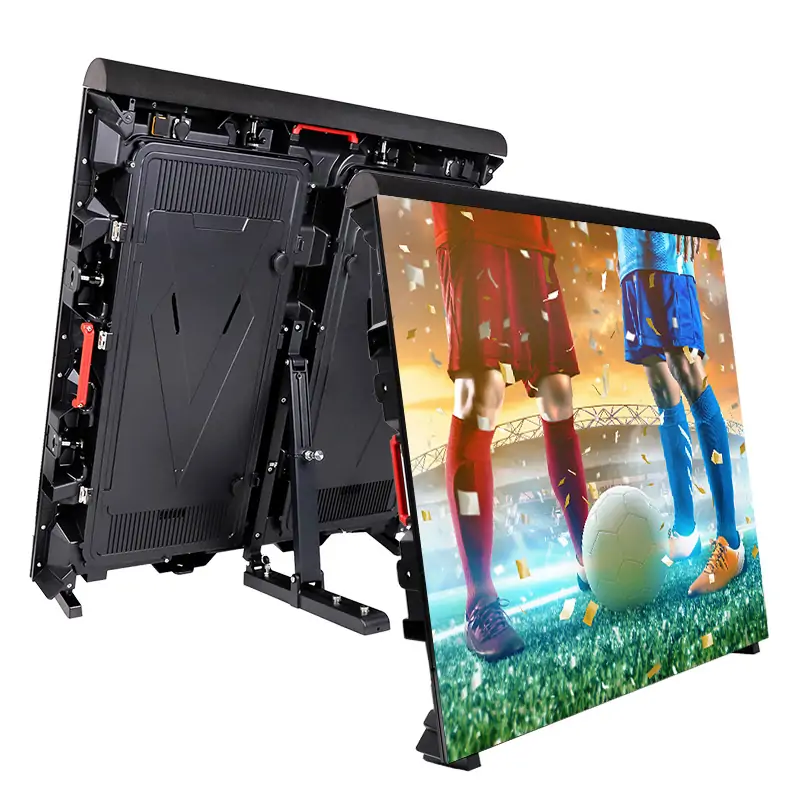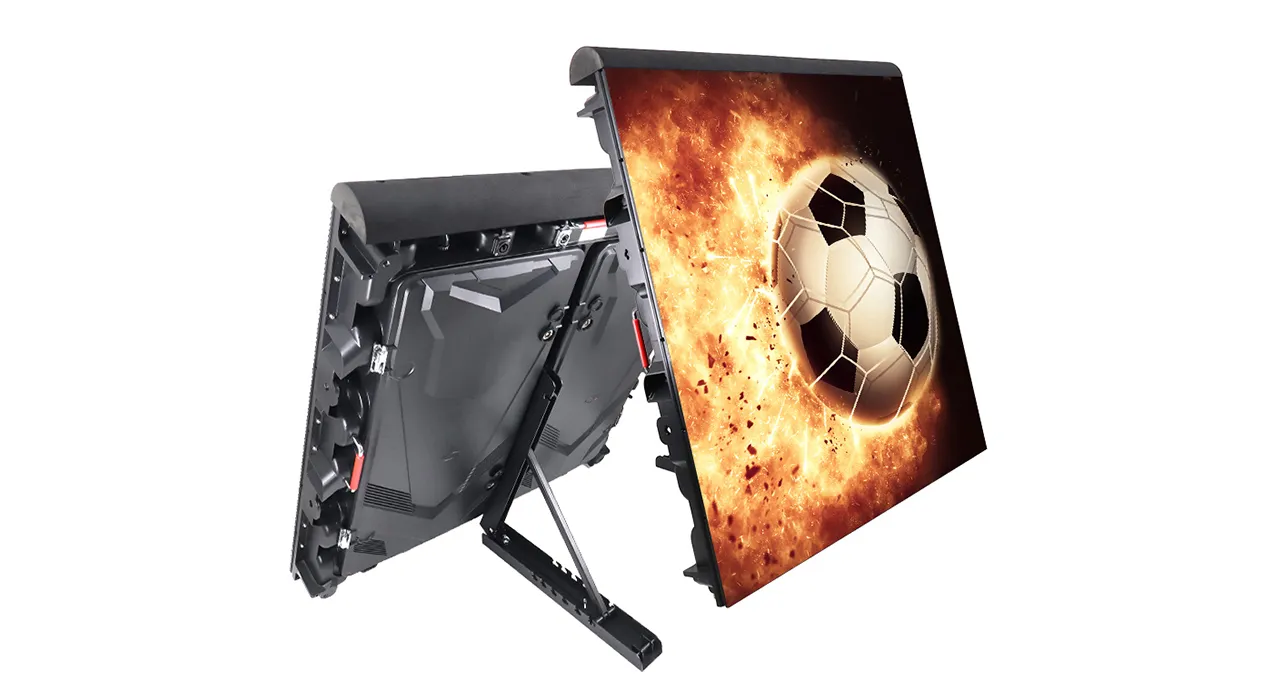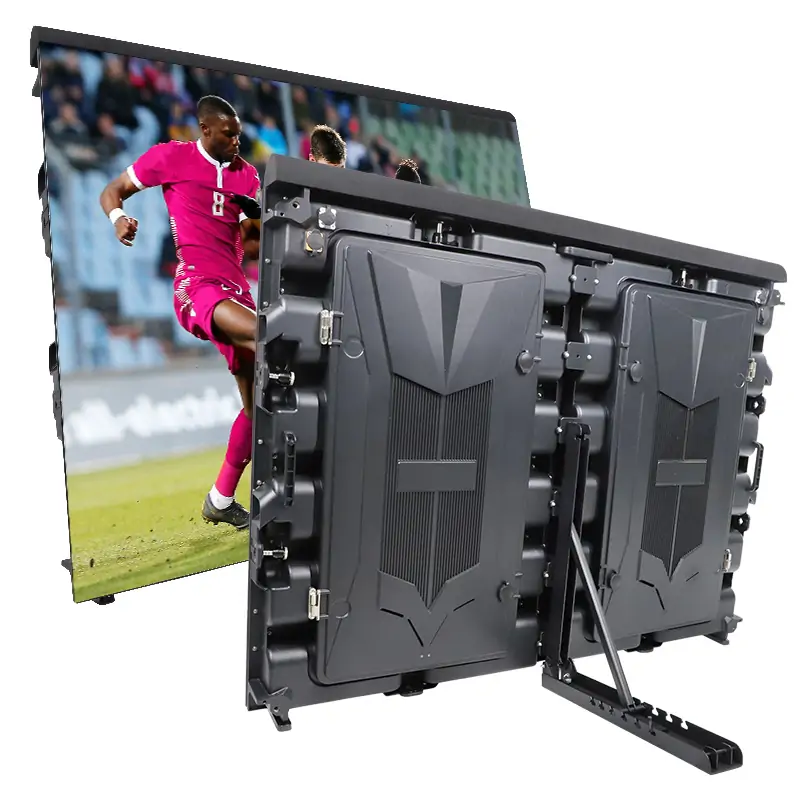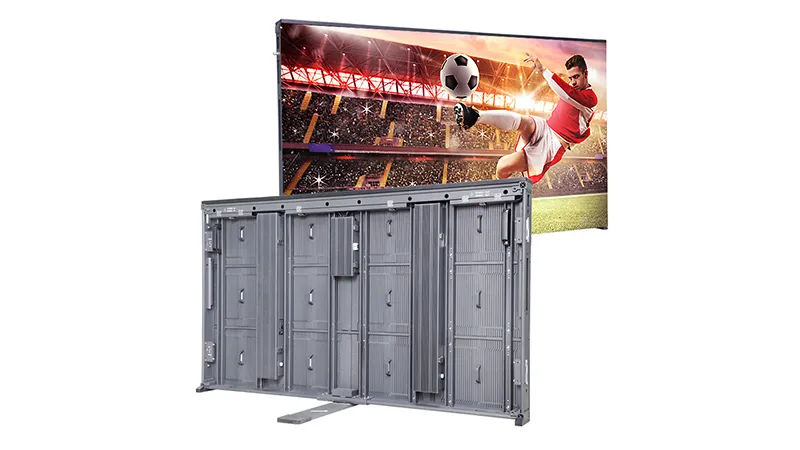Categories
Categories
2025 New LED Screen Price for You
2025 New LED Screen Price for You
Fill in the information and get your LED screen budget immediately!
Stadium screens, also called sports LED display, are widely used in stadiums and gyms to display sponsor adverts, video playback, and show amazing match moments. It plays a crucial role in highlighting viewer’s excitement, rendering the atmosphere of on-site, and broadcasting the real-time match information.
Do you have some questions about how to control, install, choose, and maintain these stadium LED screens. If you have these questions, you are bound to read this article. This post will provide insights on these questions and give you a complete guide for choosing a suitable stadium display. Now, here we go!
- 1. What is A Stadium LED Display?
- 2. Six Types of Stadium Screens
- 3. What Are the Key Features of Stadium Perimeter LED Display?
- 4. The Price of A Stadium Screen
- 5. Tips for Choosing the Stadium LED Screen
- 6. Why Do You Need An LED Display in the Stadium?
- 7. How to Control the Perimeter LED Display?
- 8. In Conclusion
1. What is A Stadium LED Display?
A stadium LED screen is an electronic screen or panel installed in stadiums, and arenas to provide visual content and information to spectators. It can display live video of matches, recordings of special moments, fair judgments, advertisements, sponsor information and other promotional content and provide a high-definition visual experience for viewers.
With remote control and real-time updates, they have the flexibility to display scores, statistics and other information, adding more flair to modern sporting events. The LED perimeter display is used for advertising around football stadiums, basketball courts, badminton courts and other sports venues. They are becoming an important driver of commercial promotions and the development of the sports industry.
2. Six Types of Stadium Screens
The LED perimeter displays can be divided into six types such as stadium ribbon display, stadium LED scoreboard, stadium perimeter LED display, large stadium LED screen (Jumbotron), center-mounted LED display, and stadium LED soft film display. Below is the detailed introduction.
2.1 Stadium Ribbon Display
Outdoor LED strip displays are designed to meet the unique requirements of stadiums and other outdoor venues. Whether displaying advertisements, animations, promotions, scores or statistics, LED strip displays provide bright, uniform images to ignite the game day experience.
Its ultra-thin, customizable display design can even adapt to curved surfaces and 360° installation, ensuring a flexible product that is ideal for end zones, sidelines, stadium surrounds, outfields, concourses, stadium exteriors or other linear applications. There are two access methods, front or top, for easy maintenance.
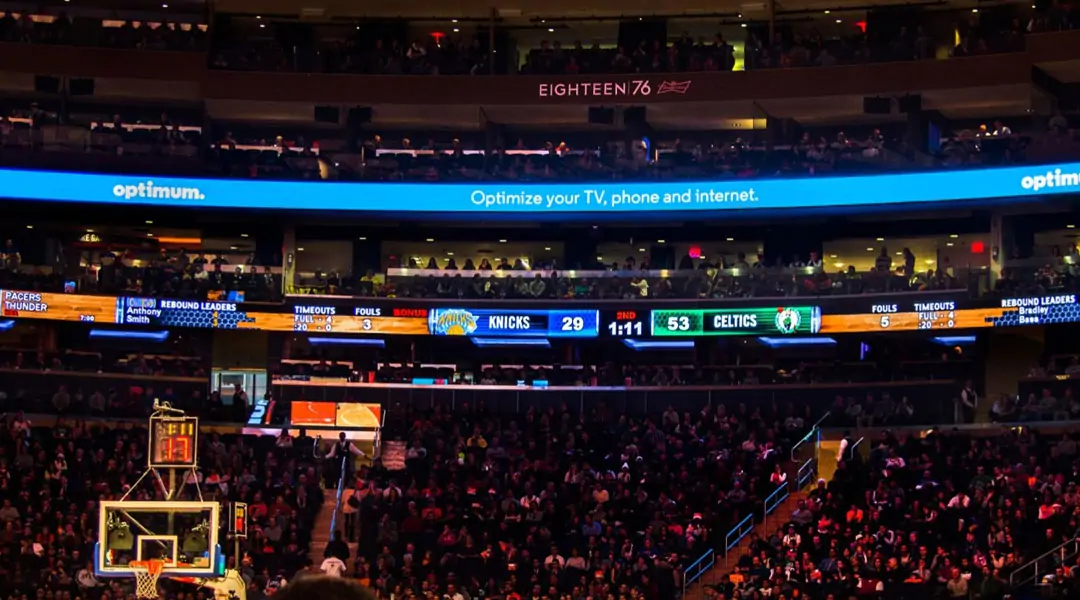
2.2 Stadium LED Scoreboard
It is connected to the timing and scoring system of the game, playing the players’ game results and related information. From the perspective of the game, the timing and scoring screen is more important. Some stadiums may not have large video screens, but they cannot be useless screens for timing and scoring.
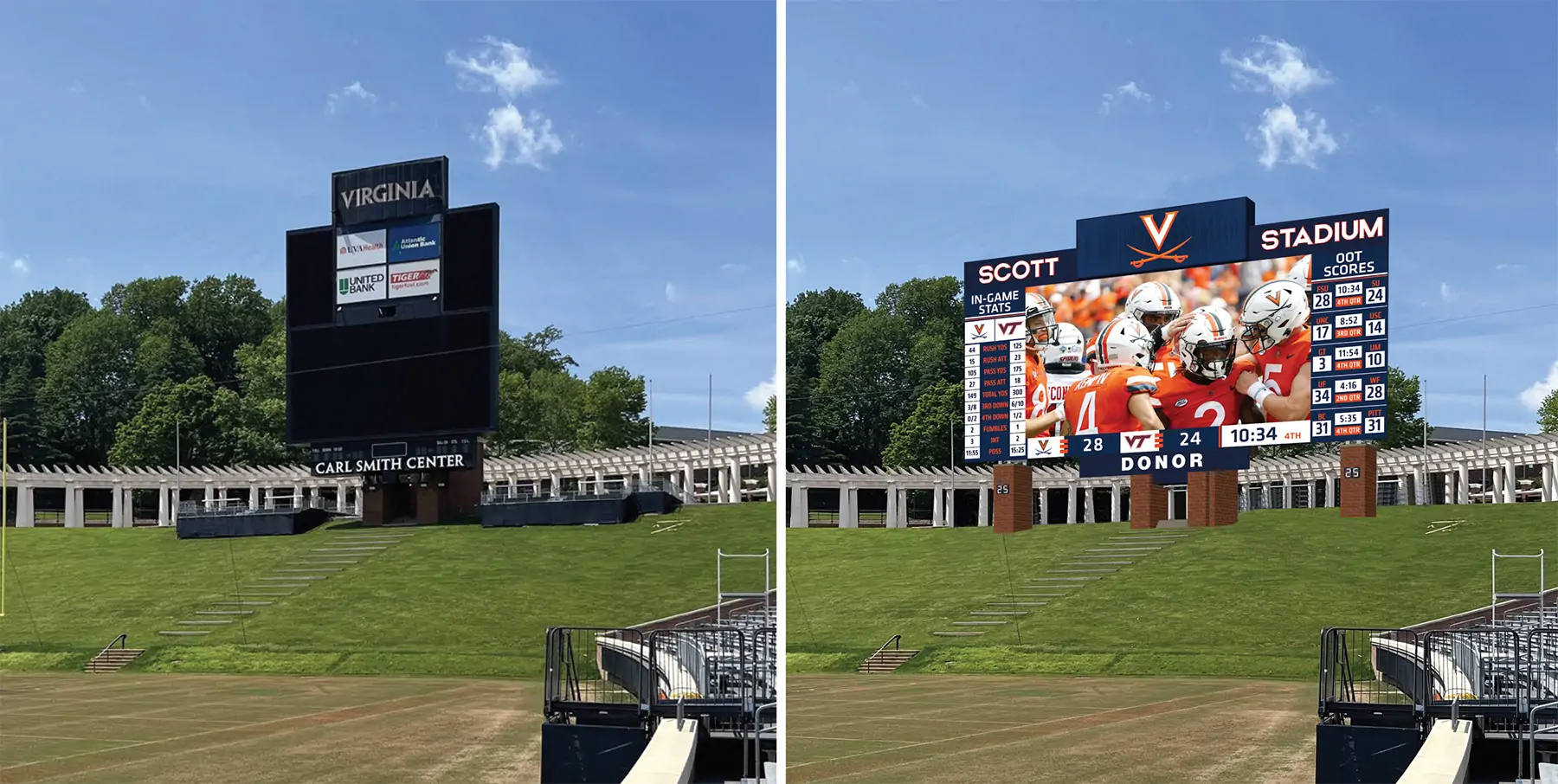
2.3 Stadium Perimeter LED Display
The stadium perimeter LED display is an LED display installed around the stadium, which can replace the walls and guardrails in the stadium, and can play more content on the LED screen, fully meeting the display needs of events such as football, basketball, and handball.
2.4 Large Stadium LED Screen (Jumbotron)
It is a conventional large LED display installed in the stadium, which is used to play the highlights of the game, slow-motion playback or wonderful close-up, so that the audience can see the game clearly at any distance.
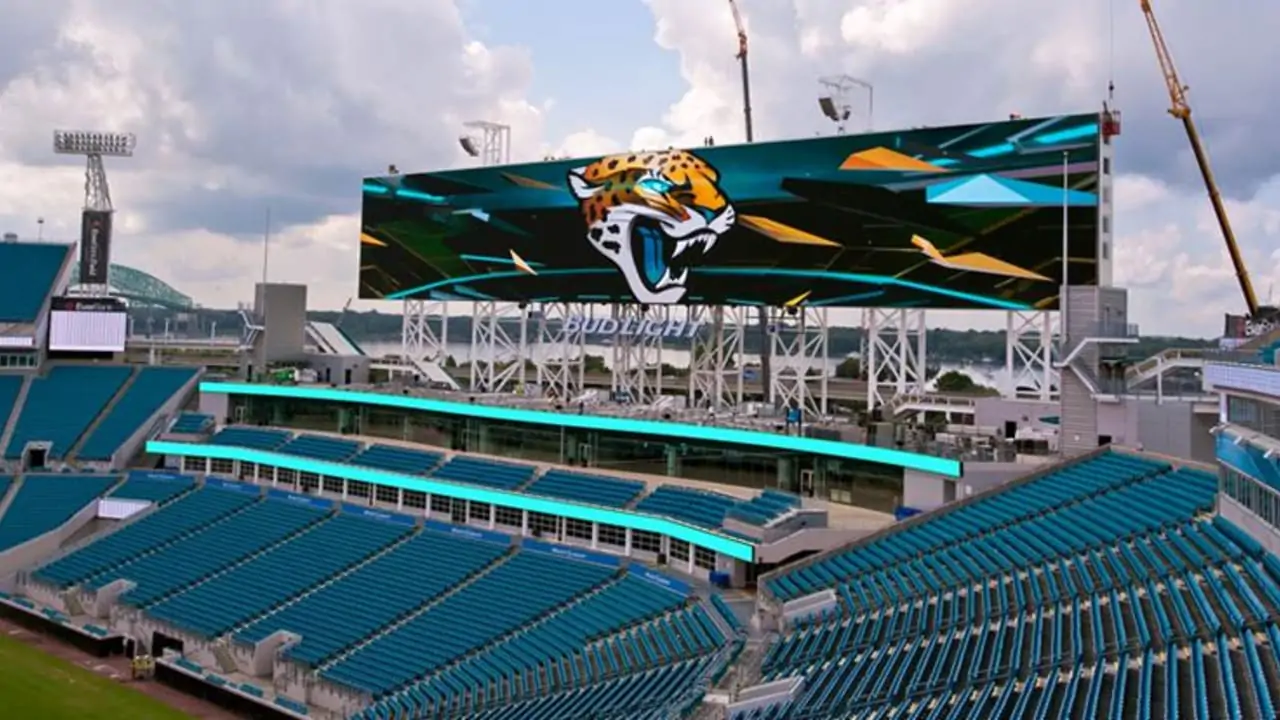
2.5 Center-Mounted LED Display
The square LED display located in the center of the stadium has a lifting and adjustment function (vertical movement) to meet the needs of competitions, performances, etc., and is regarded by the industry as an application example of LED bucket screen. It can also be divided up into different areas for displaying various statistics, charts, animations, or live broadcasts.
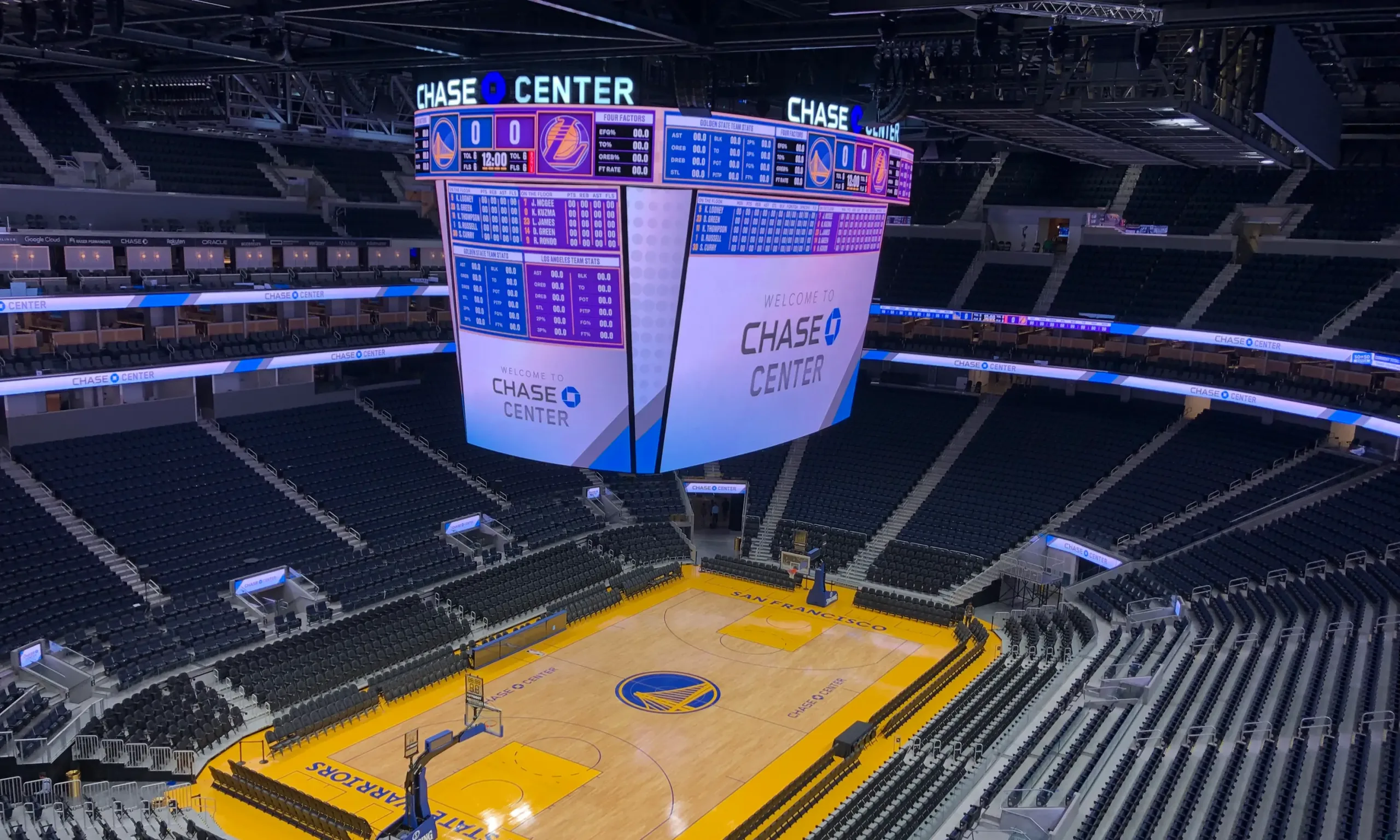
2.6 Stadium LED Soft Film Display
As a supplement to the main screen of the stadium, the soft film group is designed for playing videos, animations, and advertisements in the stadium. The cabinet is light and easy to maintain, which can meet the requirements of different installation environments.
3. What Are the Key Features of Stadium Perimeter LED Display?
The stadium screens have the features of high resolution, wide viewing angle, high refresh rate, high brightness, waterproofing, energy saving, and more. These outstanding features effectively enhance advert influence, create an immersive viewing experience, and capture the excitement and vibrancy of live events. We will introduce in detail the key advantages of stadium displays.
3.1 High Resolution
Stadium screens provide crisp, clear images in HD, 4K or even 8K quality, perfect for displaying detailed visuals such as player stats, close-ups or sponsor logos. This clarity is vital for both spectators and TV broadcasts, enhancing the overall viewing experience with crisp detail.

3.2 Wide Viewing Angle
Stadium displays offer a wide viewing angle, often exceeding 120-140 degrees, enabling 95 per cent of spectators sitting in all areas of the venue to view the screen clearly. The sports LED screen maintains uniform brightness and colour accuracy at all angles, ensuring a consistent viewing experience for fans no matter where they are sitting in the stadium.
3.3 High Refresh Rate
In order to ensure that spectators can accurately capture the excitement of a sporting event, the refresh rate of stadium screen needs to be as high as 3,840 Hz, or even 7,680 Hz for large sporting events. High refresh rates are essential for accurately displaying each and every movement of the athletes.
3.4 High Brightness and High Contrast Ratio
Stadium displays are designed with high brightness and high contrast, typically in excess of 6,000 nits, to ensure clarity in a variety of lighting conditions, including direct sunlight. This feature ensures that spectators can view content clearly, making it ideal for outdoor sporting events and venues where day or night visibility is critical.
3.5 Live Content Display
The stadium LED screen is designed to integrate with live feeds, scoreboards and interactive systems to enable real-time content updates. This feature is essential for displaying live game footage, instant replays, statistics and interactive fan engagement to ensure that spectators stay connected to the action and adverts.
3.6 Waterproofing and Durability
Athletes will inevitably collide with perimeter LED displays around the venue. It requires both outdoor and indoor LED screens to be crashworthy to protect athletes from injury and extend the life of the LED display.
In addition, the football stadium LED display has a high flame retardant rating, meets IP65 protection standards, uses V0 flame retardant wires, and has a built-in cooling fan to withstand rain, wind, extreme temperatures, and other elements.
3.7 Energy Efficiency
Modern perimeter LED displays are designed with energy-efficient technology that reduces power consumption, which is especially beneficial during long sporting events or continuous advertising cycles. Low-maintenance screens require minimal maintenance and repairs, ensuring the longest possible uptime and lifespan without the need for frequent maintenance or replacement.
3.8 Customisable Shapes and Sizes
Stadium LED screens offer great flexibility in terms of shape and size, allowing stadiums to install screens that meet their specific design and functional needs. Whether it’s a huge jumbo electronic screen, a ribbon display around the seating level or a curved screen, the adaptability of football stadium LED display ensures that they can meet the aesthetic and practical requirements of any venue.
4. The Price of A Stadium Screen
How much does the stadium screen cost? The price of a perimeter LED display depends on several elements like installation requirements, resolution, size, specific functions, etc. Here we will give you a price reference according to different types of football stadium screens.
4.1 Stadium Perimeter LED Display
Typically, the cost of stadium screens is typically $400-1000 per square metre. Pricing varies greatly depending on the multiple elements such as: size and resolution, LED chip and package technology, refresh rate and gray level, maintenance and installation demands.
However, the lowest price for a perimeter outdoor banner display measuring 960×960 mm is $390. Prices may drop slightly with the number of pieces you order in bulk, depending on the manufacturer’s policy. For example, if you choose to order nearly 1,000 pieces, the cost will be approximately $376.58. The maximum cost for a perimeter LED display is approximately $960.
4.2 Stadium Scoreboard
The cost of LED scoreboards and video scoreboards for basketball, baseball, football and football are all affected by sport-specific factors. The size of the venue, the angle of the LED display, mounting options, and electrical infrastructure can also affect pricing.
For baseball, core boards can cost between $36,000 and $750,000. For football, the average price range is $25,000 to $550,000. Finally, basketball scoreboards can cost anywhere from $10,000 to $140,000.
4.3 Stadium Center Video Screens
These stadium LED displays range in size from 75 inches to 300 inches or even larger. 75-inch LED central stadium displays cost between $2,500 and $6,000. On the other hand, 300-inch displays can cost between $35,000 and $120,000.
In addition to size, resolution also determines the price of a screen.
A 100-inch screen with full HD (1080p) resolution typically costs between $5,000 and $10,000. A 300-inch screen with the same resolution will cost $50,000 to $100,000 or more. A 100-inch 4K resolution screen costs between $10,000 and $20,000, while a 300-inch screen costs between $100,000 and $200,000 or more.
4.4 Funnel-Shaped LED Display
Larger screens and higher resolutions typically require more LED modules and pixels, so the price goes up accordingly. For example, a large P6 indoor 4.3 funnel-shaped LED display costs about $450.00-$600.00 per piece.
On the other hand, a funnel-shaped LED display with a pixel density of 65536 dot/㎡ can cost as much as $699.00-$1,299.00 per square metre.
4.5 Ring or Curved LED Display
Stadium curved LED screens can be used to create columns, rings, curves at corners. The use depends on your choice. The curvature can be concave or convex, and flexible LED modules can be magnetically attached to their associated metal cabinets to create any custom design.
Factors such as pixel pitch, brightness options and the structure chosen for the curved LED display combine to determine cost. For example, a panel size of 500*500 with a maximum resolution of 4096*2180 would cost about $190.
5. Tips for Choosing the Stadium LED Screen
With the great support of countries, more and more sports events are held to strengthen relationships between both parties and promote cooperation and development. Lots of brand parts are more willing to display their products on the stadium LED display to potentially attract customers’ attention. Therefore, A high-quality stadium display is a strong advertising method in the sports game. How to choose a suitable stadium perimeter led display. There are several tips for you.
5.1 Protection Performance
In indoor and outdoor sports venues, taking into account heat dissipation, especially in hot outdoor weather, stadium LED displays must have a high flame-retardant rating, comply with IP65 protection standards, have a V0 flame-retardant wiring, and have a built-in cooling fan.
Some possible protective options include: using cordons or protective film on the surroundings (e.g. surrounding walls), and adding additional layers such as bubble wrap.
5.2 High Brightness and Energy-Efficient
The brightness of the outdoor perimeter LED display is required to be higher than indoor stadium LED screens. However, it is not true that the higher the brightness, the better the image. There is a balance between brightness, contrast, and energy-efficient. Excessive brightness may make the screen be difficult to truly restore colors. So it is important to choose the one with good color and light spectrum coverage.
5.3 Reliability and Durability
The filler, PCB boards, and power cord sheath must be made from polymer materials that have good flame retardant characteristics. Power supply design must ensure that the LED display is powered separately, and conforms to the SJ/T11141 2003 standard.
The cable cord must be approved according to GB50168 or GB50171. The screen should also include automatic fire alarm, smoke sensor, lightning protection and automatic screen-off functions. The power distribution cabinet should have overload protection, leakage prevention and a step-by-step power-on functi
5.4 Viewing Distance and Angle
If the audience density is high and the viewing distance is close, you can choose 3mm, 4mm, 5mm screen. For large outdoor stadiums, generally choose full-colour LED display with larger dot pitch, such as 6mm, 8mm, 10mm.
LED display needs to ensure that its vertical and horizontal viewing angles between 120-140 °, in order to ensure that the audience gets a better visual effect. LED cylinder screen or LED bucket screen support 360 degrees viewing angle.
5.5 High Optical Performance
When the background illumination is less than 20lk, the contrast ratio of stadium screens needs to reach 100el. The white point coordinates can be adjusted according to the use of the environment between the colour temperature of 5000k-9500k, in line with the CIE 1931 chromaticity system, the allowable deviation △x∣≦0.030, ∣△y∣≦0.030.
5.6 High Refresh Rate
As the shooting or live broadcasting of the game requires high-definition cameras, the refresh rate of the LED display screen is required to be high. Stadium perimeter LED display usually adopts high brush driver IC to ensure that the refresh rate reaches above 3840Hz.
These two stadium LED displays, EA1600SP and EA1280SP1, are our top recommendations. They comply with all the requirements above, and EagerLED also supports customizing the stadium display according to your demands.
6. Why Do You Need An LED Display in the Stadium?
Installing LED displays in a stadium can bring many benefits to both the venue and the spectators. The reasons why stadiums need LED screens are as follows:
6.1 Enhance the Fan Experience
LED perimeter displays provide real-time updates, instant replay and live game footage, allowing fans to experience the game from every angle. They can also provide interactive elements, such as fan voting or social media displays, to increase engagement and excitement during the game.
6.2 Enhance the Aesthetics of Your Stadium
Well-designed stadium displays can enhance the visual appeal of a stadium. The high brightness and vibrant colors of LED screens can change the atmosphere of a stadium, making it look more modern and professional.
6.3 Improved Communication
Sport LED displays provide a platform for communicating important information such as match scores, match statistics and player profiles. This real-time communication enhances spectator understanding and engagement, ensuring they are kept up to date throughout the event.
6.4 Advertising and Revenue Generation
Football stadium screens create valuable advertising space for sponsors with vibrant and compelling content. The high visibility of these adverts during a match or event can generate significant revenue for the venue, as advertisers are willing to pay a premium for displaying adverts to a large audience.
6.5 Customisable for Every Event
Football stadium LED displays can be adapted to different types of events, from sporting events to concerts or other large gatherings. Their flexibility makes them a valuable long-term investment for venues hosting a variety of events.
By investing in LED displays, stadiums can enhance their functionality, provide a better experience for fans and open up new revenue streams through advertising and promotions.
7. How to Control the Perimeter LED Display?
Controlling stadium screens requires specialized hardware and software systems to manage what is being displayed in real time. The following is an overview of typical control methods for stadium screens:
7.1 Control System Hardware
(1) LED Display Controller: A controller (such as a Novastar or Linsn system) is responsible for processing the video signal and sending it to the sports LED display. This controller is connected to a central control computer or server that manages the content.
(2) Video Processor: The video processor improves the quality of the input signal by optimizing the resolution, aspect ratio and format to ensure a seamless display on large stadium screens(Jumbotron). This is particularly useful for switching between live broadcasts, commercials or replays.
(3) Signal Transmission Equipment: Data is transmitted from the control room to the LED screen via cables (e.g. fibre optics) or wireless transmission systems. Stadium screens typically use CAT5/CAT6 cables or fibre optics to transmit signals over long distances without delay.
7.2 Input Sources
(1) Multiple Input Channels: Stadium screens typically support multiple input sources, including live camera feeds, satellite broadcasts, and pre-recorded video. The video processor can seamlessly switch between these sources during the event.
(2) Audio Integration: LED perimeter board can be synchronized with the stadium’s audio system in order to coordinate announcements or commentary to match the visual content on the screen.
7.3 Control Software
(1) Content Management System (CMS): A CMS allows operators to schedule and manage content such as game statistics, video feeds, adverts and score updates. Modern systems are often easy to use and support multiple media formats such as video, images and live feeds.
(2) Remote Access and Monitoring: Many stadium LED control systems provide remote access through a Web-based platform or application, allowing operators to control and monitor screens from different locations. This helps to adjust content on the fly.
(3) Real-Time Updates: Control systems allow content to be updated in real-time so that live scores, social media feeds, fan messages or sponsor logos can be dynamically displayed throughout the game or event.
7.4 Backup Systems
Redundancy and fail-safe systems: Given the importance of smooth operation during live events, most stadium LED control systems are equipped with back-up power supplies, redundant data cables and fail-over systems to prevent screen downtime in the event of technical problems.
7.5 Advanced Control Features
(1) Split screen functionality: Stadium LED displays can be divided into multiple sections to show different content at the same time (e.g. one part of the screen showing live match footage and another showing adverts or statistics).
(2) Interactive features: Modern control systems allow for fan participation, such as live polls or social media posts that can be displayed in real time.
7.6 Control Room Setup
Stadium LED displays are usually managed from a control room equipped with computers, control software, video processors and audio systems. This setup allows for centralized management and ensures that operators can effectively adjust content and monitor screen performance.
7.7 Network Integration
LED perimeter displays are often integrated with the stadium’s wider IT network, which includes the ticketing system, scoreboard data and real-time statistics for the game. This ensures that the screens display accurate, up-to-date information.
7.8 Mobile and App-Based Control
Some modern LED systems allow control via mobile apps so that content or settings can be changed quickly from a smartphone or tablet. This is particularly useful for smaller stadiums or when quick adjustments are needed during an event.
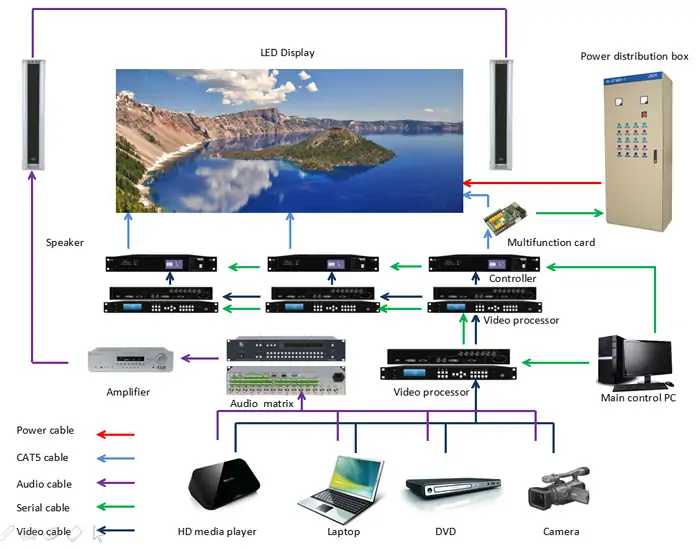
8. In Conclusion
Stadium screens have evolved into essential tools for creating immersive sports experiences. With advancements in LED technology, these displays offer real-time updates, high-resolution visuals, and dynamic advertising opportunities, enhancing fan engagement and boosting revenue generation for venues.
Stadium LED display is a wise investment to increase your revenues and brand influence. EagerLED team member who has professional knowledge can help you customize a perfect stadium display solution for your sports events. Please get in touch with us by filling out the form below.
GET A QUOTE
GET A QUOTE
Consult us for LED display solutions

